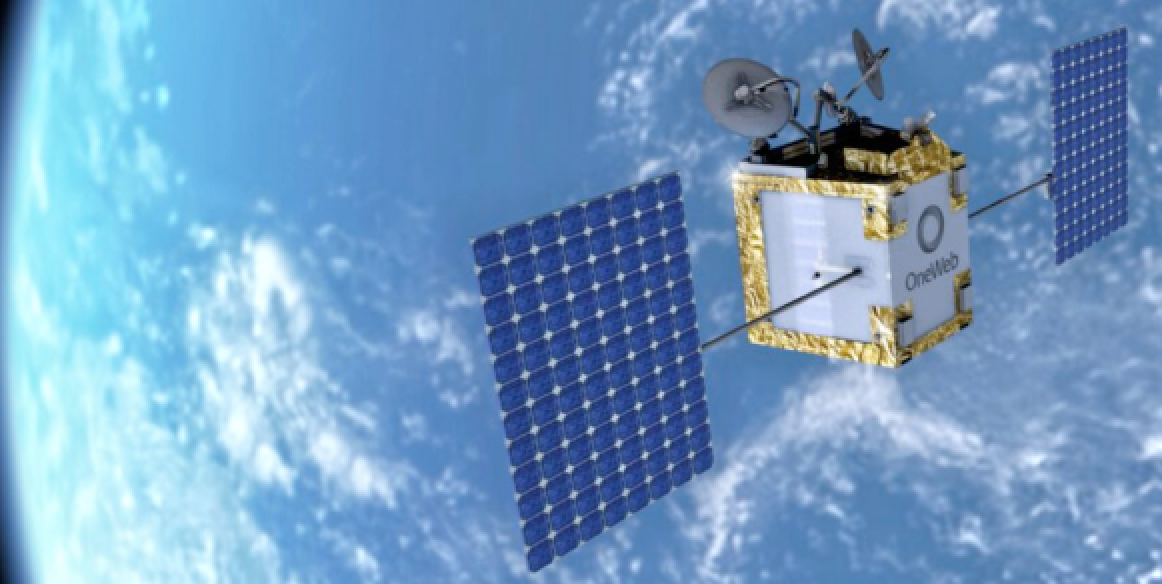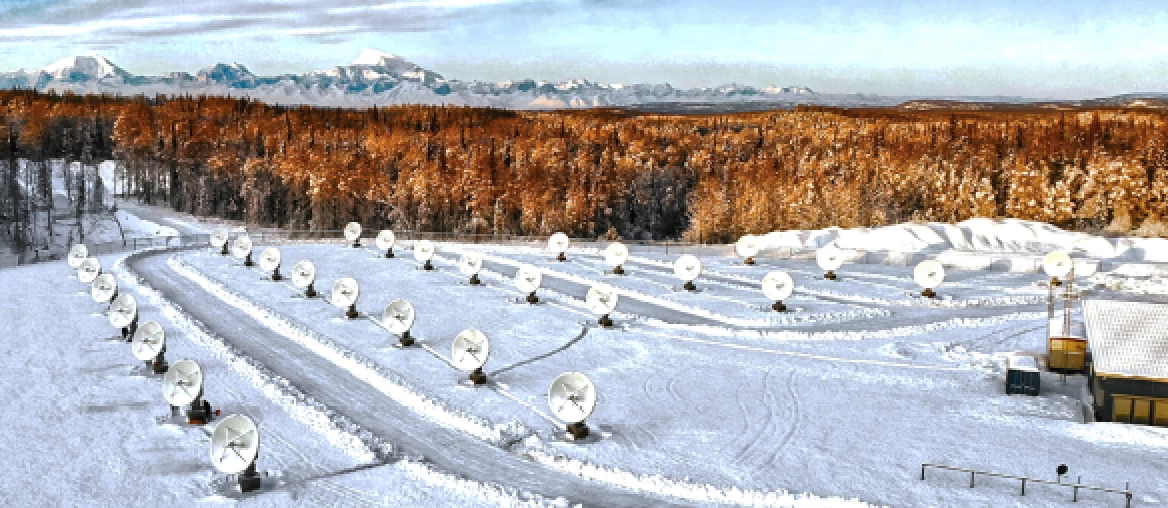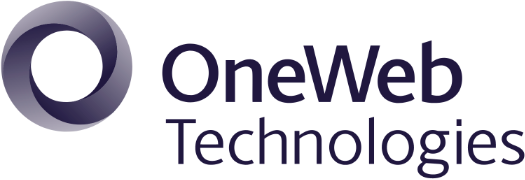A recognized leader in the satellite industry, Mr. Steen most recently served as the Chief Executive Officer of iDirect, a market leading ground segment technology provider for commercial products and the U.S. Department of Defense. Upon stepping into the role as that firm’s CEO in 2017, he oversaw the company’s revenue and market share, doubling in size through organic and inorganic growth strategies.

Mr. Steen held multiple roles since joining iDirect in 2010, where he was responsible for driving the company’s technology and innovation strategy. Under Steen’s leadership, the company pioneered the satellite industry’s first ground segment platform that supported a global network footprint, enabling the industry’s transition to High Throughput Satellite (HTS) architectures and becoming the technology partner of choice for the top satellite operators and service providers.
Mr. Steen is known for his strong customer relationships, successful track record in balancing strategy against execution, and enthusiasm for developing exceptional leadership teams.
Good day, Mr. Steen. Would you please tell us what attracted you to OneWeb Technologies and what you are hoping to achieve in your role as the CEO?

Kevin Steen
OneWeb Technologies offers me a new adventure and opens the opportunity to get in at the ground level and make a real impact in a company. It is also exciting to think about the prospect to make a greater societal impact. Through our LEO connectivity approach not only can we connect the disconnected, but we also offer a positive impact to the world and future on a larger scale. On the government side, an example might be protecting our troops and providing solutions that keep them safe. Another example is disaster recovery during a hurricane where we are enabling valuable communications for first responders, for those administering aid, or delivering food. Or, perhaps more important to me is that we are providing a means of communicating with loved ones when you are in a location where connectivity was not previously available. It is exciting to see how we can leverage technology to make these things possible.
What leadership experiences at ST Engineering iDirect will be of use to you in your role as the CEO of OneWeb Technologies?
Kevin Steen
My prior experience has helped me hone my leadership style overall. My approach always begins with defining a company or product’s value proposition, and then working through developing a strategy, and the corresponding execution plan, by looking at the landscape and determining options,

Your playbook should never be linear, and I’ve learned that strategies need to evolve and grow over time. To allow for that, you need a plan “A,” “B,” and “C” and to be flexible to adjust as needed — particularly if you want to grow and grow profitably. I’m also proud of the solid customer and vendor relationships I’ve established, and I also reflect on the experiences that building these relationships have brought. That’s something I get the most out of personally, as I truly enjoy meeting customers, and working to understand and solve their problems. It feels good to know your customers are counting on you — that means that the solution you provide is important. Finally, having built executive teams, I find it very rewarding to identify and attack problems together, and I will draw on my prior experience to do that. Those are just some of examples of transferable skills I’ve gained and brought with me to OneWeb Technologies, along with prior experience within the satellite industry.
How does OneWeb Technologies differentiate itself from OneWeb?
Kevin Steen
It is important that the market understands who we are and how we are different from our parent company. OneWeb Technologies is the U.S. proxy company of OneWeb and our focus is the U.S. government. While we rely on our parent company to provide the satellites and the connectivity, we wrap our value-added services around them. We do not compete with them and are a wholly owned subsidiary of OneWeb that is governed by a separate board.
Why are LEO constellations important?
Kevin Steen
In addition to LEO’s number one value proposition of low-latency connectivity, LEO constellations also enable latency-sensitive applications. Many applications today, in fact, are written assuming low latency terrestrial network connectivity. LEO constellations enable the ability to meet that low latency requirement that GEO or MEO constellations are not able to achieve. Coverage is also important. Where GEO doesn’t provide coverage far north over poles, depending on the orbital design LEO offers connectivity where historically there has not previously been the ability to connect. LEO capacity also offers an enterprise play providing high-speed connections to corporations with critical infrastructure needs as well as to the mobile maritime or aeronautical industry, in addition to the U.S. government, which previously did not have flexible high-speed connectivity. Finally, LEO has societal benefits including education, healthcare, telemedicine, and connecting the disconnected. For example, we recently rolled out connectivity solutions for schools, along with telemedicine in Alaska and northern Canada.
Specific to the government, we connected a military base in Greenland to support morale and welfare, providing them with access to email and the ability to leverage high speed internet connectivity to enrich their lives, which includes capabilities such as watching videos on a streaming service. These advantages are complementary to the benefits that GEO constellations offer.
What are your thoughts on the proliferation of LEO smallsats and the concerns expressed by many in the industry regarding orbital collisions and resulting debris fields?
Kevin Steen
Interestingly, there were naysayers in the early days that said LEO constellations will “never fly” or make it. Now, we see two large, proliferated constellations in orbit and that’s thanks to the engineers who solved incredibly complex challenges to make LEO constellations a reality. Some people believe all LEO networks operate in the same narrow orbit that is similar to GEO; however, LEO constellations fly anywhere between 350 to 2000 km, with responsible planning that enables these constellations to coexist.
When it comes to debris fields, there are companies that see a value proposition and are coming into existence to clean up the debris. From my view, responsible planning is key and having companies participating with the bodies that regulate what is going up, enhances the process.
We are seeing approval for large quantities of satellites with governments looking to prove them out in stages. Things that are new are not always well received. So, building responsibility has its value and following what regulators say will go a long way towards enhancing safety.

As the CEO, formulating company strategies and then implementing some, they are certainly challenges of the highest order, as you well know from your past positions in the industry — how do you encourage and ensure your teams are ‘in line’ with your plans for OneWeb Technologies?
Kevin Steen
Communication and collaboration are key. It is important to make sure everyone is involved to provide their input at the outset, and that they are part of the framework for creating a company strategy. This includes ensuring that these same people are also included in the feedback loop of how that strategy is coming along. There will always be lots of different perspectives involved and it is important to gain buy-in through clear communications and goal setting. Make no mistake, the communication piece takes a lot of energy, but if you don’t keep it up, that’s when things break down and people start to make assumptions or operate in a vacuum. Constant communication is necessary with metrics that can be reported on regularly to be successful. The benefit is that, with the ongoing communication, adjustments can be made early and more effectively if necessary.

Given your experiences in the industry, when you review all that has been accomplished, what project(s) / mission(s) truly bring a smile of satisfaction to you?
Kevin Steen
I’ve personally enjoyed those projects where I’ve worked with customers who tried something new and were first to market. Relationships where we’ve been able to team up with a customer as a strategic technology partner, rather than just a vendor. There is a lot of planning and unknowns on a project like that, but it is rewarding to operate collaboratively to solve the unknowns together and adapt to any challenges along the way. For example, while at iDirect, our customer, Inmarsat, launched their first global GEO constellation with three satellites. iDirect developed the first ground network that could support a global constellation focused on mobility. This was a first for Inmarsat and a first for iDirect. As a partner, we worked collaboratively to solve complex problems and to deal with some of the unknowns. It felt good to be part of the team that won that contract, and part of the team that executed and delivered on what we said we would accomplish.
There is a lot of movement in the industry. What do you see as your customers biggest needs? What are they looking for?

Kevin Steen
Our customers biggest needs are secure, reliable, and resilient connectivity. In addition to the actual coverage, which is coming along quite well, the biggest gap currently are the terminals and the corresponding capabilities that customers need to meet their use cases.
Whether it is GEO or LEO, there is a need for a variety of terminals to optimize all of the different use cases out there. Whether it be a smaller and lightweight solution for a soldier carrying something in the field, versus a larger fixed solution for a base such as the one in Greenland, versus a terminal designed for mobility applications on naval vessels, or even something for aeronautical — there is a wide variety of need for terminals and there are not a lot of companies that can meet all of those needs right now. That means there is quite a bit of demand for terminals that will truly unlock the low-latency and mobile value of LEO, and at the same time make sure their network is resilient and secure. At OneWeb Technologies, we are trying something new through LEO. We are working to meet customer demand, along with managing their expectations for an entirely new experience — their experience to date has been terrestrial or GEO. We are trying to meet that demand and deliver something that has never been done before. There is a patience factor as with any new technology, and the industry has to make those investments and prioritize what it will bring to market when.
How do you partner with other constellations?
Kevin Steen
A front and center is the potential transaction between OneWeb and Eutelsat, which would combine LEO and GEO constellations. There is a natural complement of those two constellations blending together and they form an extremely powerful telecommunications network when you join them together as they each bring different value propositions. For example, you can do a lot over LEO that you might not be able to do over GEO, particularly when it comes to offering connectivity over the poles, offering unmanned capabilities, or sending latency-sensitive information. On the other hand, and when it is not latency-sensitive, or comes to sending large amounts of traffic or doing backhaul and trunking, that’s where a big pipe such as GEO might come in handy. When combined, LEO and GEO can be pretty powerful and can offer an incredible value proposition to a customer who may want both.
Government keeps looking to commercial players for solutions? How will this trend continue?
Kevin Steen
When it comes to satellite communications, the U.S. government has historically leveraged commercial technology that offers a wider variety of fantastic and innovative technologies. By partnering with the commercial market, the U.S. government also has the added benefit of gaining access to these technologies and bringing them to market faster than they can do themselves. Leveraging commercial technologies also gives the government choices. There is a big debate around standards that enables the government to further leverage new technologies — we’re seeing the government funding some of these programs to get the ball rolling. I see this trend only continuing as it offers a proven model that will continue with tremendous upside, and no downside.
Please offer our readers some prognostications as to what your company and the industry might experience during 2023?
Kevin Steen
From a OneWeb perspective, you will see our global footprint continue to expand. By the end of 2023, we will have a global footprint of satellites launched and we will have full global service availability expected by the first quarter 2024. We will have additional backup satellites in orbit to proactively be prepared for potential issues and we will expand our offerings as we deliver full global service availability. Specifically, we will begin to leverage that global footprint by expanding our secure interconnects for the U.S. government, along with continued government collaboration on secure and resilient connectivity solutions.

You will see the roadmap for OneWeb’s next generation constellation become more refined and we will introduce incredible new solutions and offerings for OneWeb Technologies’ customers. As we achieve these milestones, company revenue will continue on its trajectory — the proposed merger with Eutelsat will — for the first time — combine GEO and LEO services. I’m incredibly excited for that to occur! For the industry, we will see a continued adoption of LEO capacity in addition to hybrid networks, where terrestrial networks combine with satellite-based networks. I’m looking forward to seeing those use cases roll out including global mobility applications, IoT applications, unmanned vehicles, UAVs, logistics industries, and support for mission-critical capabilities for real-time latency sensitive applications. We’ll see adoption grow for both commercial and government applications. Finally, similar to when “over the top” first came out and there were large amounts of bandwidth that we didn’t seem to know what to do with, there will be an application boom in the satellite industry. We’re going to see incredible adoption as the coverage and capabilities expand and we currently can’t even imagine what those applications will be.
Mr. Steen, what are some challenges ahead?
Kevin Steen
The beauty of the industry is that there are always opportunities to solve problems. One challenge I see shaping up, however, is the geopolitical landscape and whether companies will invest to support their local governments from a geopolitical perspective, or, will they support their commercial activities to expand infrastructure and grow the respective economies.
Another challenge I anticipate is relative to the pace that we can bring user terminals to market to capitalize on the opportunities that LEO technologies bring. Is there enough investment out there and are companies ready to invest in LEO oriented solutions?
Finally, relative to constellations such as Starlink and Kuiper, where they are closed and 100 percent proprietary, will the market readily adopt those? OneWeb Technologies’ model is one where we work with an ecosystem of players and are much more open with a focus on finding the right solutions to meet our customer’s needs by working collaboratively with partners. Will the market readily adopt the closed proprietary systems or prefer more of the open partnership approach?
To summarize, some of the bigger challenges that I foresee are the geopolitical landscape, the pace of investment, the pace of innovation, and prioritizing what applications to support and when. The challenge will not be “are there opportunities created by LEO technologies” but rather, “which opportunities to prioritize based on the demand generated by LEO technologies.”
onewebtechnologies.net

